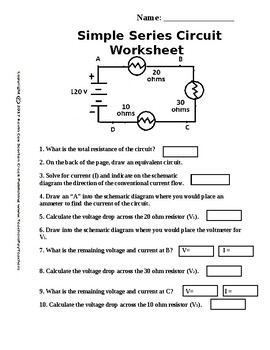
In the space provided, draw your own circuit using symbols from the previous worksheet. Remember to label your symbols. This a circuit diagram. This is a simple and quick way to represent an electric circuit. The circuit has a battery, a bulb and a switch, which are all connected with electric wires.
Summary In the everyday electrical devices we use — calculators, remote controls and cell phones — a voltage source such as a battery is required to close the circuit and operate the device. In this hands-on activity, students use batteries, wires, small light bulbs and light bulb holders to learn the difference between an open circuit and a closed circuit, and understand that electric current only occurs in a closed circuit. This engineering curriculum meets Next Generation Science Standards (). Copyright © UK Power Networks Engineering Connection Electrical engineers design the circuits and batteries that are in the devices and appliances that we use every day. Circuits can be found in music players, computers, video games, appliances, microwaves, phones, televisions, cameras, medical equipment, vehicles and so many more products.
Engineers take seriously the responsibility of designing circuits that work dependably and safely. While new devices are constantly being developed around the world, engineers strive to create safer, more efficient products that ultimately help improve people's lives. Learning Objectives After this activity, students should be able to: • Define, recognize, build and draw a closed circuit. • Explain why a closed circuit is required for any electrical device to operate. • Describe the transformations of energy that occur in the circuit. • Use correct operations and appropriate methods to solve Ohm's law problems.
More Curriculum Like This. Each TeachEngineering lesson or activity is correlated to one or more K-12 science, technology, engineering or math (STEM) educational standards. All 100,000+ K-12 STEM standards covered in TeachEngineering are collected, maintained and packaged by the Achievement Standards Network (ASN), a project of D2L (www.achievementstandards.org). In the ASN, standards are hierarchically structured: first by source; e.g., by state; within source by type; e.g., science or mathematics; within type by subtype, then by grade, etc. This Performance Expectation focuses on the following aspects of NGSS: Science & Engineering Practices Disciplinary Core Ideas Crosscutting Concepts Make observations to produce data to serve as the basis for evidence for an explanation of a phenomenon or test a design solution. Energy can be moved from place to place by moving objects or through sound, light, or electric currents.
Soal psikotes untuk calon TAMTAMA mempunyai bentuk yang sama persis dengan model soal psikotes calon. CONTOH SOAL KECERMATAN. PSIKOTES CALON SESPIM POLRI 2018. Tes Potensi Akademik Bahasa Inggris • 1. 
Energy is present whenever there are moving objects, sound, light, or heat. When objects collide, energy can be transferred from one object to another, thereby changing their motion. In such collisions, some energy is typically also transferred to the surrounding air; as a result, the air gets heated and sound is produced. Light also transfers energy from place to place. Energy can also be transferred from place to place by electric currents, which can then be used locally to produce motion, sound, heat, or light. The currents may have been produced to begin with by transforming the energy of motion into electrical energy.
Energy can be transferred in various ways and between objects. Do you agree with this alignment? Thanks for your feedback! Materials List Each group needs: • 1 D-cell battery • 5-7 in (13 - 18 cm) insulated wire (gauge AWG 22) (available at most hardware stores) • 1 small light bulb holder (#40) (optional; available at most hardware stores) • 1 small light bulb holder (#40) (available at most hardware stores) • small wire strippers or sandpaper (to remove insulation at wire ends) • tape (scotch, masking or electrical) • 1 • 1 Note: These materials (except the tape and worksheets) can be reused in numerous other electricity activities. When the batteries wear out, dispose of them at a hazardous waste disposal site. Introduction/Motivation Have you ever changed the light bulb in a lamp? Or, have you ever watched an adult change a light bulb in a lamp or light fixture?
(Some students will answer yes.) Why did you change the light bulb? (Possible answers: The lamp would not turn on, the light bulb stopped working.) What happened when the new light bulb was placed in the lamp.
(Answer: The lamp worked and the light bulb lit up.) When light bulb is broken or burned out, it does not light because the lamp's circuit is open. (Draw an open circle on the board, one that does not connect the end to the beginning). However, when a new light bulb is placed in the lamp, the lamp's circuit is closed (draw a closed circle on the board) and the electrons can move around the circuit and light the light bulb.
Do you recall what you have learned about atoms? Well atoms are made of smaller particles called protons, neutrons and electrons.